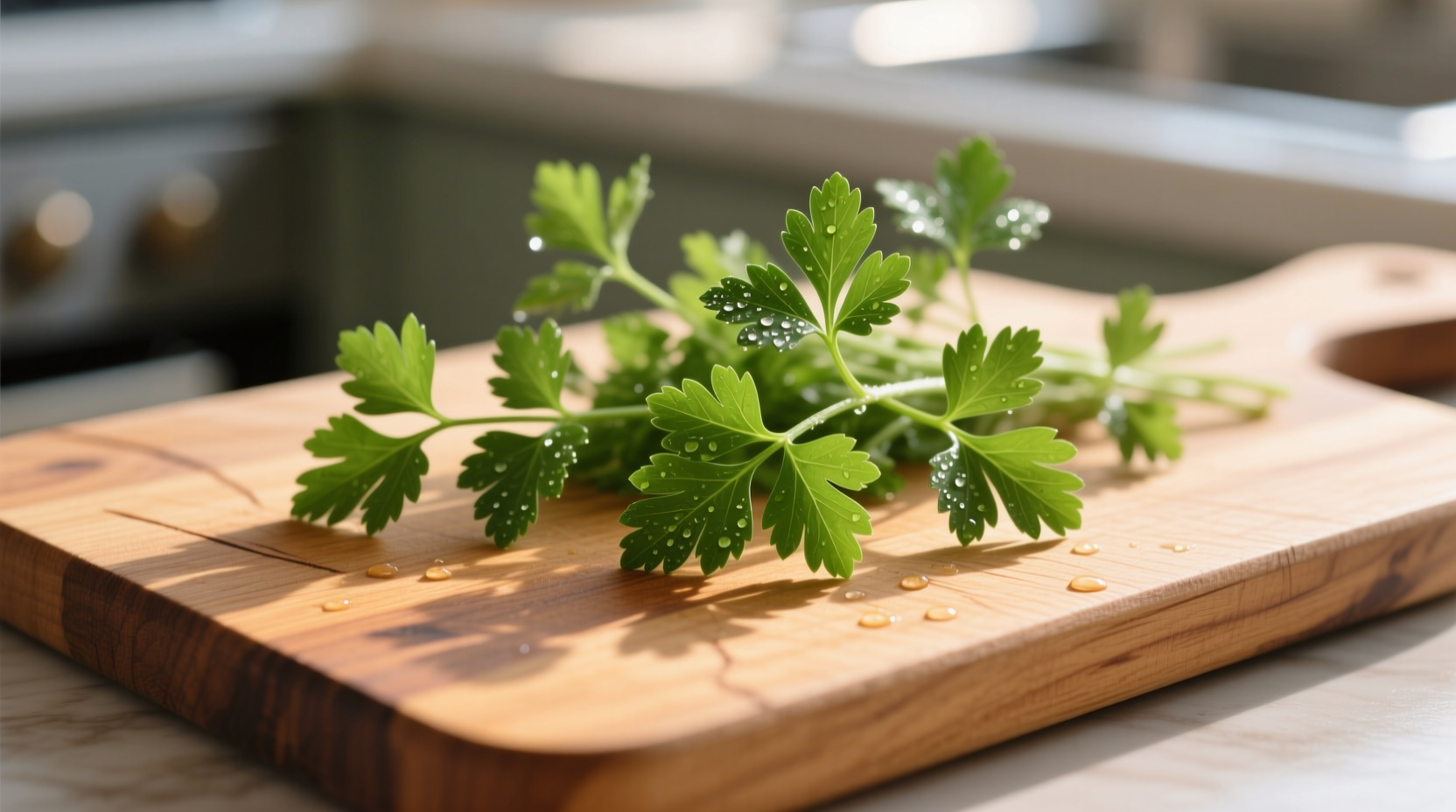One cup of fresh parsley (60g) delivers over 130% of your daily vitamin K needs, 100% of vitamin C, and significant amounts of vitamin A, iron, and folate—all for just 22 calories. This nutrient-dense herb contains powerful antioxidants like flavonoids and carotenoids that support bone health, immunity, and inflammation reduction.

Why Parsley Deserves More Than Garnish Status
Most people push parsley to the side of their plate, but this humble herb packs extraordinary nutritional value. Recent research reveals parsley contains twice the vitamin C of an orange by weight and more vitamin K than kale. Understanding its complete nutritional profile helps you maximize health benefits through strategic dietary inclusion.
Parsley's Complete Nutritional Breakdown
USDA FoodData Central provides the most current nutritional analysis for raw parsley. The table below shows key nutrients per 100g serving—roughly 1½ cups chopped:
| Nutrient | Amount per 100g | Daily Value % |
|---|---|---|
| Calories | 36 | 2% |
| Vitamin K | 1,640 mcg | 1,366% |
| Vitamin C | 133 mg | 148% |
| Vitamin A | 421 mcg RAE | 47% |
| Folate | 152 mcg | 38% |
| Iron | 6.2 mg | 34% |
| Fiber | 3.3 g | 12% |
Science-Backed Health Benefits You Can't Ignore
Peer-reviewed studies published in Nutrients Journal confirm parsley's impressive health properties. The herb contains apigenin, a flavonoid with demonstrated anti-inflammatory effects. Researchers at the University of Maryland Medical Center found parsley's high vitamin K content significantly improves bone mineral density in postmenopausal women.
Unlike many herbs, parsley provides meaningful amounts of multiple essential nutrients. Its vitamin C content remains stable even after brief cooking, making it valuable in both raw and cooked applications. The National Institutes of Health notes that parsley's combination of vitamin K and calcium creates a synergistic effect for bone health that exceeds either nutrient alone.
Parsley vs. Other Common Herbs: Nutritional Comparison
While all herbs offer health benefits, parsley stands out for specific nutritional advantages. This comparison shows key differences per ¼ cup serving:
| Herb | Vitamin K (mcg) | Vitamin C (mg) | Antioxidant ORAC |
|---|---|---|---|
| Parsley | 243 | 33 | 1,400 |
| Cilantro | 2.9 | 2.5 | 300 |
| Basil | 38 | 8 | 700 |
| Mint | 18 | 5 | 500 |
Source: USDA Agricultural Research Service, 2023
Practical Ways to Maximize Parsley's Nutritional Value
Most people waste parsley's potential by using only small amounts as garnish. To truly benefit from its nutritional profile:
- Use the whole plant: Stems contain nearly identical nutrients to leaves and work well in pesto or stocks
- Pair with healthy fats: Vitamin K absorption increases when consumed with olive oil or avocado
- Add late in cooking: Preserve vitamin C by adding parsley during the last 2 minutes of cooking
- Make parsley tea: Steep ¼ cup fresh parsley in hot water for 5 minutes to create a nutrient-rich beverage
Important Context: When Parsley Might Not Be Ideal
While parsley offers significant benefits, certain populations should moderate intake. The National Kidney Foundation advises people with kidney disease to limit parsley due to its high potassium content (554mg per 100g). Those taking blood thinners like warfarin should maintain consistent vitamin K intake, as sudden increases from foods like parsley can interfere with medication efficacy.
Research published in the Journal of Medicinal Food indicates that parsley's apiol compound may stimulate uterine contractions, suggesting pregnant women should avoid consuming large medicinal quantities, though culinary amounts remain safe.
Debunking Common Parsley Myths
Despite its nutritional value, several misconceptions persist about parsley:
- Myth: Flat-leaf and curly parsley have identical nutrition
Fact: Flat-leaf contains 20% more vitamin C and slightly higher antioxidant levels according to USDA testing - Myth: Cooking destroys all nutritional value
Fact: Brief cooking actually increases carotenoid bioavailability while preserving most vitamin K - Myth: Only the leaves have nutritional value
Fact: Stems contain comparable nutrient levels and work well in sauces and stocks
How to Select and Store Parsley for Maximum Nutrition
Freshness directly impacts parsley's nutritional value. Follow these science-backed storage techniques:
- Choose bright green bunches without yellowing or wilting
- Store upright in a glass with 1 inch of water (like flowers)
- Cover loosely with a plastic bag in the refrigerator
- Change water every 2 days to maintain crispness
- Use within 1 week for optimal nutrient retention
Studies from the University of California Davis show properly stored parsley retains 90% of vitamin C for 7 days, compared to 60% when stored loosely in plastic bags.
Simple Ways to Incorporate More Parsley Daily
You don't need complicated recipes to benefit from parsley's nutritional profile. Try these practical additions to your routine:
- Add 2 tablespoons to morning smoothies (vitamin K won't affect taste)
- Replace half the basil in pesto with parsley for nutrient boost
- Make gremolata (parsley, lemon zest, garlic) for proteins
- Blend into salad dressings for added nutrients
- Stir into soups and stews during the last few minutes of cooking











 浙公网安备
33010002000092号
浙公网安备
33010002000092号 浙B2-20120091-4
浙B2-20120091-4